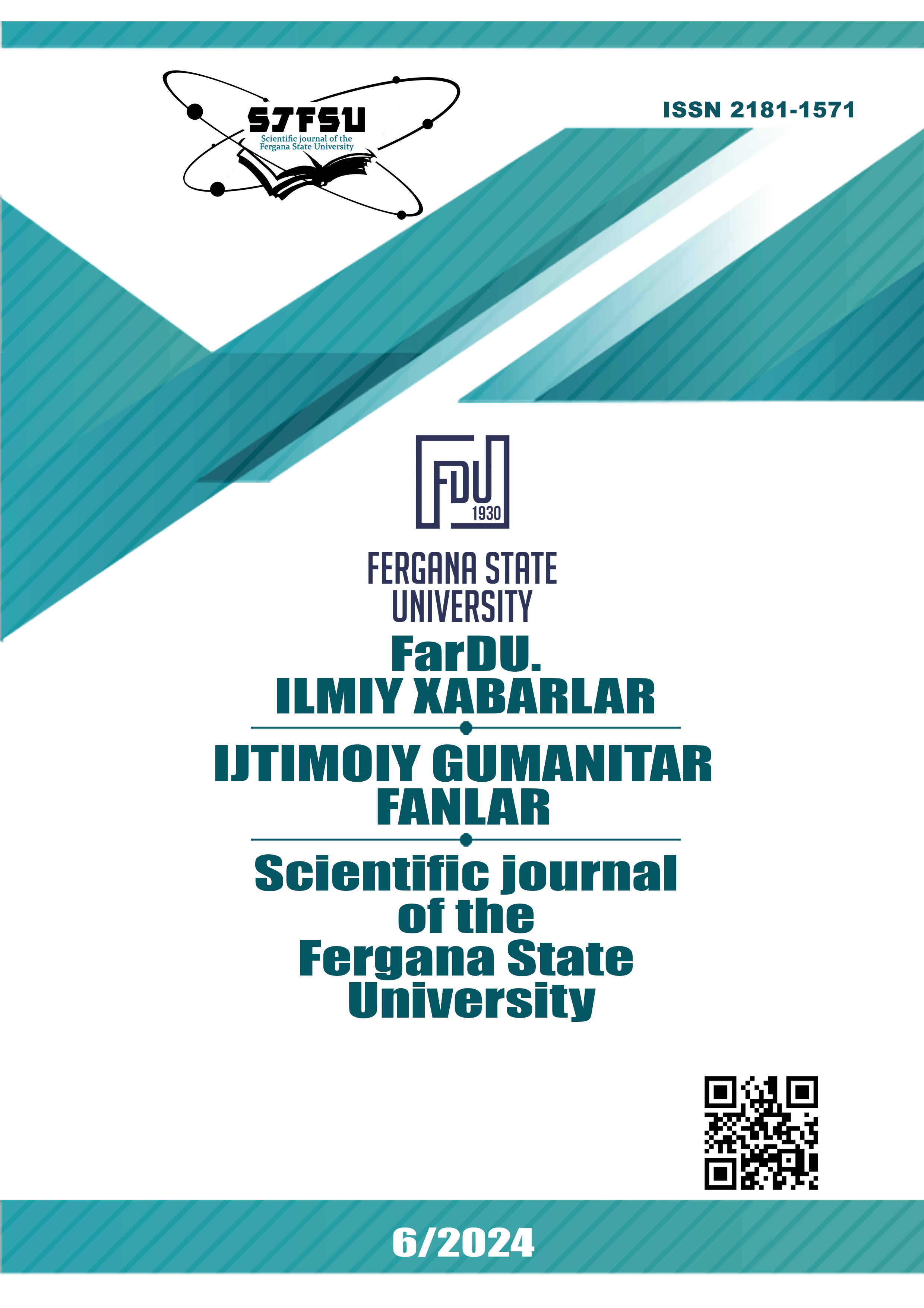ANTHROPONYMS REFLECTING HUMAN CHARACTERISTICS IN THE GHAZALS OF ABDURAHMAN JAMI
Keywords:
Abdurahman Jami, poetry, onomastics, anthroponym, meaning of the word, name, nickname of a person, human character.Abstract
Studying onomastics from a cultural-historical point of view, explaining it according to grammatical and lexical-semantic features is of particular importance for linguists. In particular, the main section of onomastics dedicated to the study of a person's name - anthroponyms sheds light on the study of a person's race, history, culture and traditions. Anthroponyms are one of the ancient cultural and spiritual values of the Tajik and Uzbek peoples and are used for the richness and diversity of the language of artistic works. Maulana Abdurahman Jami also used anthroponyms effectively in his works, under these concepts he used the quality and nature of a person with specific meanings.
In the article, anthroponyms in Jami's poems are collected on the basis of three divans – “Fatihat ush-shabab”, “Vositat ul-iqd” and “Khotimat ul-hayat” and classified according to their quality - anthroponyms representing a legendary name; historical figures; names of people in love stories; religious figures; names of writers, poets and artists. It is also shown that the poet used them for a specific purpose, clearly and clearly revealed his unique human qualities and characteristics through them.
References
Абдураҳмони Жомийнинг “Фотиҳат-уш-шабаб” девонининг конкорданси.//Тузувчи: Мажитова С.Ж. – Тошканд: Фан ва технология, 2018. -934 с.
Абдураҳмони Жомийнинг “Воситат ул-иқд” ва “Хотимат ул-ҳаёт” девонларининг конкорданси.//Тузувчи: Мажитова С.Ж. – Тошканд: Фан ва технология, 2018. -965с.
Афсаҳзод, А. Ҷомӣ – шоири ғазалсаро//А.Афсаҳзод. – Душанбе: Маориф, 1989. -256 с.
Зеҳнӣ, Т. Санъати сухан // Т.Зеҳнӣ. – Душанбе: Адиб, 2007. -400 с.
Капранов В. А. К вопросу о мировозренях Джами на язык//Маҷмуи мақолаҳо. – Душанбе: Ирфон, 1965. -с.108-119 .
Қуръони карим бо тарҷума ва эзоҳот ба забони тоҷикӣ. – Покистон, 2006. -763 с
Majitova, S. (2024). The role of mystical terms in the formation of the persian literary language. News of the NUUz, 1(1.9), 286-288. https://doi.org/10.69617/nuuz.v1i1.9.3986
Фарҳанги “Шоҳнома”-и Фирдавсӣ // Тартибдиҳанда: Иброҳим Ализода. – Душанбе: Адиб, 1992. -196 с.
Фарҳанги осори Ҷомӣ. Иборат аз ду ҷилд. 15000 калима ва ибора // Мураттиб: А. Нуров. – Душанбе: 1983.
Фарҳанги забони тоҷикӣ. Иборат аз 2 ҷилд. – М., СЭ, 1969. – Ҷ.1. -908 с.; Ҷ.2. -908 с.
Ҳомидзода, Д. Топонимика // Д.Ҳомидов. – Душанбе: 2024. -196 с.
ЭСТ. Иборат аз ҳашт ҷилд. Ҷ 1. – Душанбе: ЭСТ, 1978.
Энциклопедияи адабиёт ва санъати тоҷик. Ҷ. 3. – Душанбе: Сар.илмии эн.cов.тоҷик, 2004. -524 с.
https://tadqiqot.uz/index.php/art/article/view/9094/8665
https://talqinvatadqiqotlar.uz/index.php/tvt/article/view/2632
Downloads
Published
Issue
Section
License
Copyright (c) 2024 Scientific journal of the Fergana State University

This work is licensed under a Creative Commons Attribution-NonCommercial-NoDerivatives 4.0 International License.

